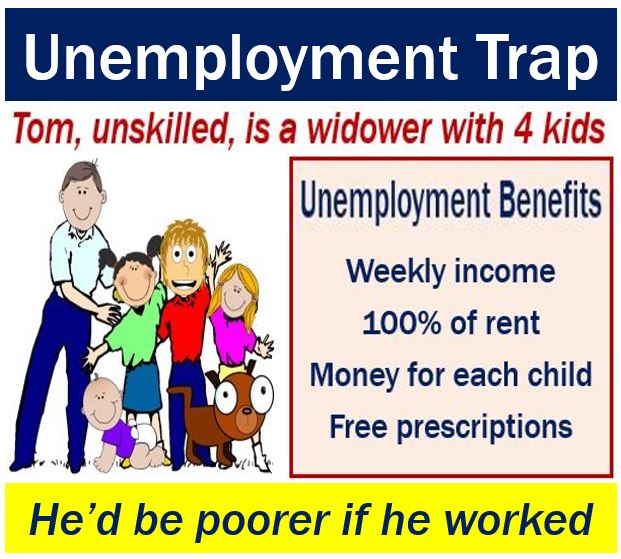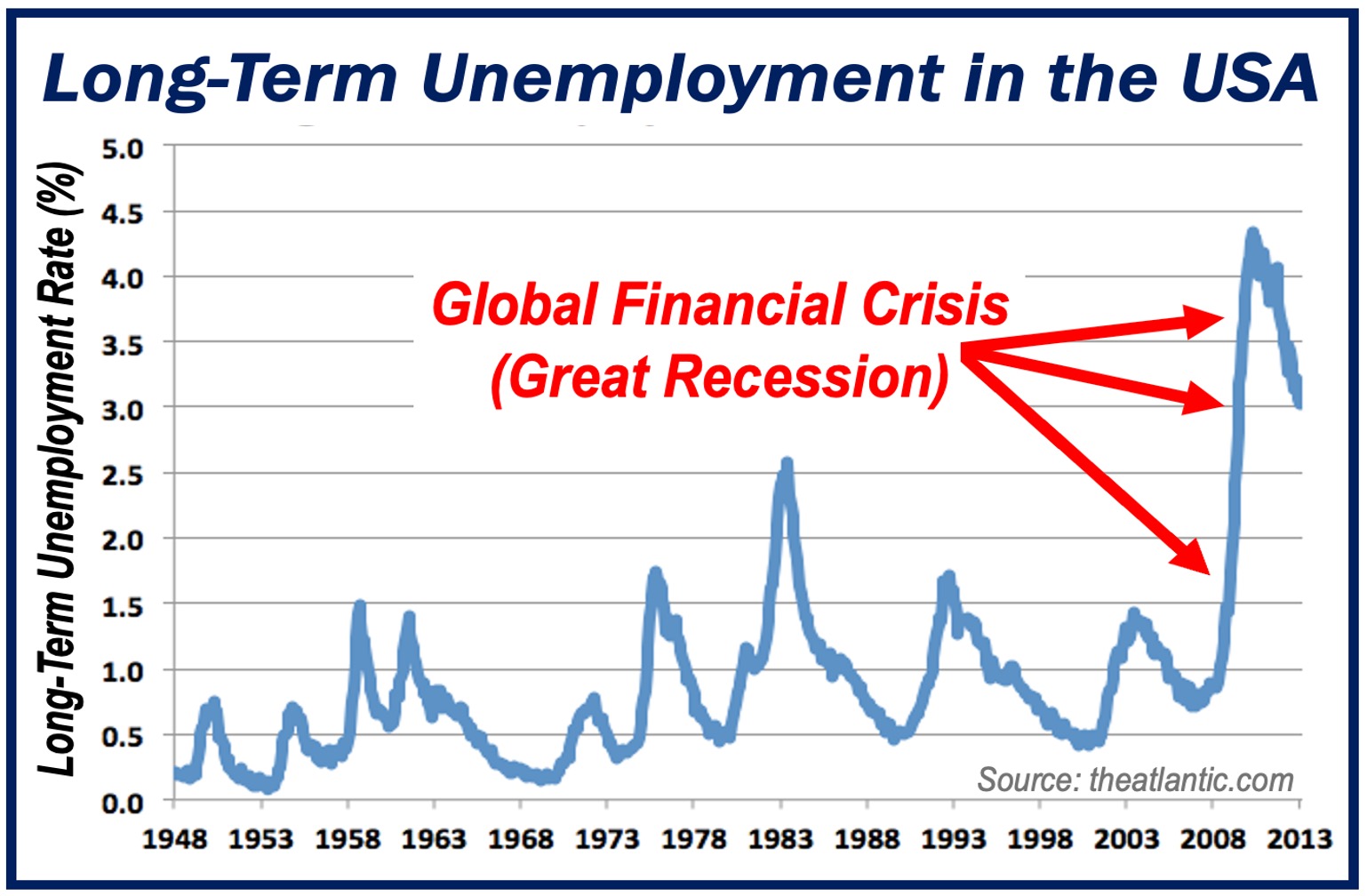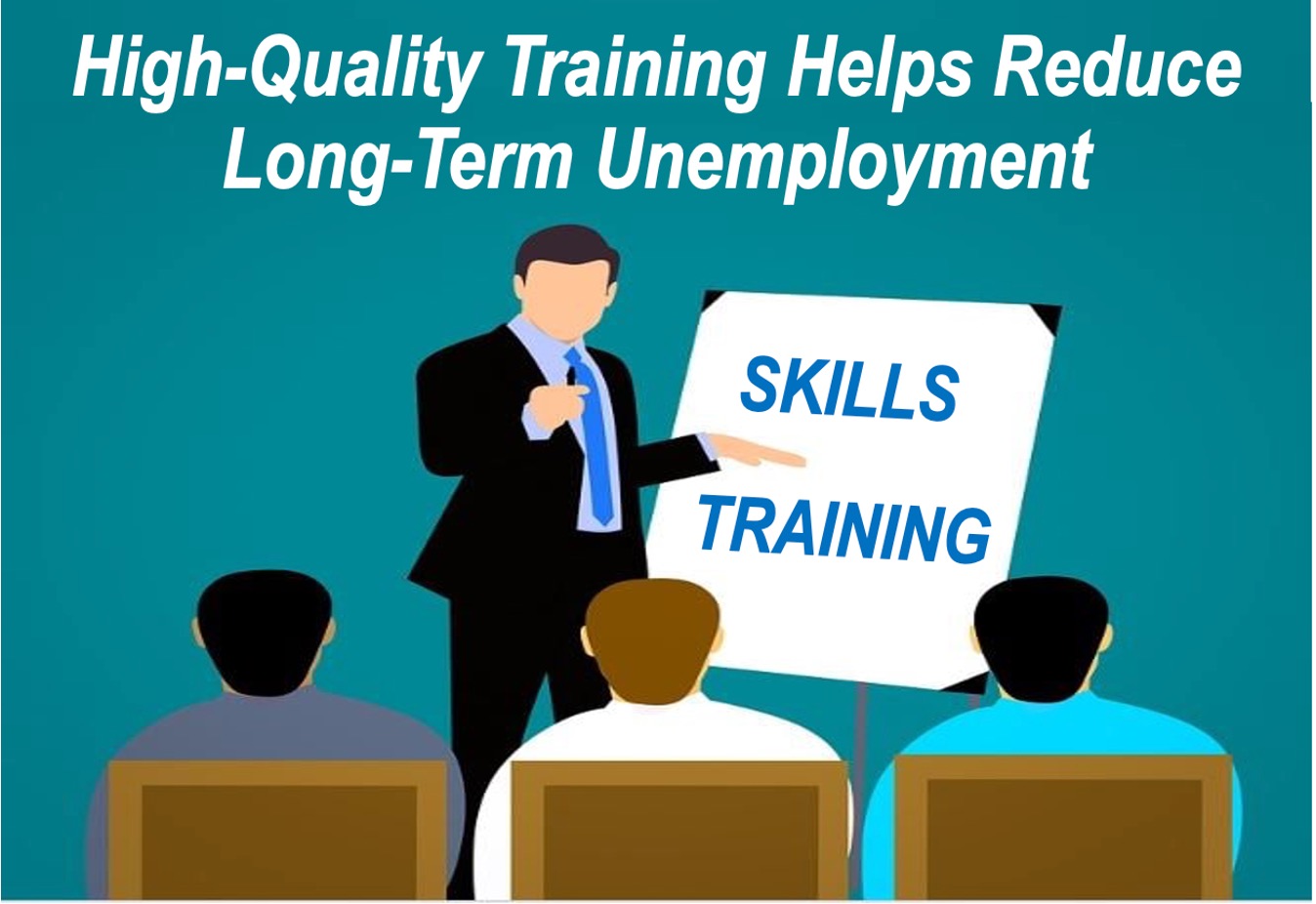The Unemployment Trap, also known as the welfare trap or the poverty trap in the UK, occurs in country’s with generous social insurance – welfare systems.
People on unemployment benefit find that they are no better off if they enter a low-paying job, because their take-home pay – after deducting taxation and national insurance contributions – is either less, the same, or not significantly more than what they are currently receiving.
Put simply, the unemployed person’s social security or unemployment benefits erode his or her motivation to get back on the job market. Those in the unemployment trap form part of the voluntary unemployment total.
Opportunity cost
The unemployed individual sees that the **opportunity cost of going back to work is too great for too small a financial return, which can create a perverse incentive to not work.
** Opportunity cost involves looking at what you had to give up when you made a choice.

The unemployment trap is more common among people with no skills than, for example an unemployed doctor. The salary of a doctor is significantly greater than what he or she receives in unemployment benefits. A doctor has a financial incentive to find a job.
An unskilled, single-parent with lots of children, who receives money for each child, gets help with the rent, in many countries receives free medical prescriptions, as well as a weekly income, may find it hard to get a job where he or she is better off.
Addressing the unemployment trap problem
According to the OECD (Organization for Economic Co-operation and Development), investment in top-quality training is vital to help young adults get out of the unemployment trap.
After the global financial crisis of 2007/8, and the Global Recession that it caused, younger workers have found it difficult to get jobs, and risk spending many years trapped at the bottom of the socioeconomic ladder.
An OECD report – Job market recovering but wage growth remains weak – informed that one third of people looking for work among the 34 OECD countries had been unemployed for over one year – that is 15.7 million people.
According to Angel Gurría, General Secretary of the OECD, long-term unemployment was 77% higher in 2015 than just before the global financial crisis. More than half of those 15.7 million people had been unemployment for at least 24 months.

Phillip Inman, writing in the Guardian, quoted Mr. Gurría, who said:
“If that happens, the legacy of the crisis would be to ratchet inequality up yet another notch from levels that were already far too high. Governments need to act now to avoid a permanent increase in the number of workers stuck in chronic joblessness or moving between unemployment and low-paid precarious jobs.”
The Great Recession
From 2007 to 2015, wages in the advanced economies remained stagnant, with tens of millions of unemployed, unskilled workers in the Mediterranean belt stuck in the unemployment trap.
Regarding the unemployment trap and young adults, Mr. Gurría said:
“While levels [of unemployment] have peaked in the worst-hit countries of southern Europe, youth unemployment remains above pre-crisis level in nearly every OECD country.”
“The share of young people neither employed nor in education or training – the so-called Neets – is still higher than in 2007 in more than three quarters of OECD countries among 20- to 24-year-olds, and in nearly two thirds of countries among 25- to 29-year-olds.”

Quality training programs
The OECD is urging governments to focus on high-grade training programs to improve young people’s skills. A young person’s career prospects over the long term are mainly determined by the first ten years of their working life, says the OECD.

Unless money is spent training young unskilled, unemployed adults, the unemployment trap will become a normal part of the European Union’s economic landscape, the OECD warns.
The report authors wrote:
“An adequate skills policy has an important role to play in reducing inequalities in the labour market and boosting productivity and wages.”
“While expanding education and training programs and improving their quality is critical, the Outlook shows that it is equally important to improve the recognition and use of skills at work: among equally educated and skilled workers, those who use their skills at work are more productive and earn higher wages.”
Video – What is the Unemployment Trap?
This video, from our sister YouTube Channel – Marketing Business Network – explains what “The Unemployment Trap” is using easy-to-understand language and examples:
